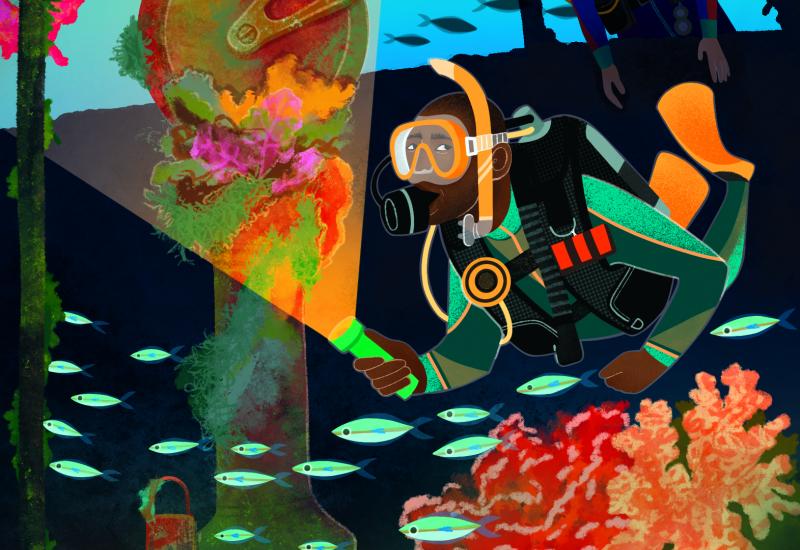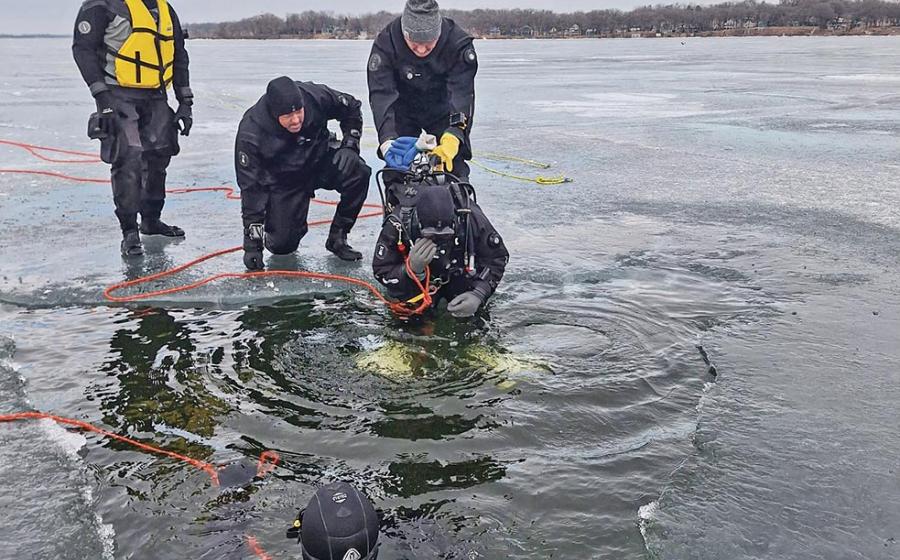The Andrea Doria
Diving the Doria Today Diving the Andrea Doria takes a considerable investment in training and gear. Mixed gas certification (tri-mix or heliox) is required because much of the wreck is now below 200 feet. And although charters are no longer "invitation only" arrangements, just showing up with a bunch of C-cards doesn't guarantee you'll get to dive.
Diving the Andrea Doria takes a considerable investment in training and gear. Mixed gas certification (tri-mix or heliox) is required because much of the wreck is now below 200 feet. And although charters are no longer "invitation only" arrangements, just showing up with a bunch of C-cards doesn't guarantee you'll get to dive.
"I have people send me a resume to see what kind of diving they've done, and I check their references," said Hank Garvin, captain of the Garloo, a Long Island-based charter boat. "No matter what someone pays me, if it's obvious he's inexperienced while he's gearing up or doesn't sound like he knows what he's doing, I'll keep him from diving."
Twin tanks on open-circuit scuba (along with stage bottles for decompression gasses) are a standard gear configuration, but a growing number of divers now use mixed-gas rebreathers for the dive. Unlike the first Doria divers, who shivered in quarter-inch wetsuits, most divers visiting the wreck today opt for dry suits as protection against the chill of water that ranges from 38 to 48 degrees.
One thing that hasn't changed about diving the Doria--mother nature. Conditions remain as unpredictable as ever, and divers should come prepared to battle strong (and shifting) currents and low visibility. The six-week summer dive season, typically running from mid-June to late July, is the only time seas are calm enough in this part of the Atlantic for charter boats to make the 10-hour run to the site. Even in this window, you may experience a rough ride.
Space on multi-day charters to the wreck is limited, and accommodations vary by boat. Some are ultra-Spartan--shared bunkrooms and heads, plus you bring your own food--others have private cabins and crew-staffed galleys. Rates for charters typically range from $800 to $2,500 a head, depending on the number of days and the level of accommodations.
Diving the Doria Today
 Diving the Andrea Doria takes a considerable investment in training and gear. Mixed gas certification (tri-mix or heliox) is required because much of the wreck is now below 200 feet. And although charters are no longer "invitation only" arrangements, just showing up with a bunch of C-cards doesn't guarantee you'll get to dive.
Diving the Andrea Doria takes a considerable investment in training and gear. Mixed gas certification (tri-mix or heliox) is required because much of the wreck is now below 200 feet. And although charters are no longer "invitation only" arrangements, just showing up with a bunch of C-cards doesn't guarantee you'll get to dive.
"I have people send me a resume to see what kind of diving they've done, and I check their references," said Hank Garvin, captain of the Garloo, a Long Island-based charter boat. "No matter what someone pays me, if it's obvious he's inexperienced while he's gearing up or doesn't sound like he knows what he's doing, I'll keep him from diving."
Twin tanks on open-circuit scuba (along with stage bottles for decompression gasses) are a standard gear configuration, but a growing number of divers now use mixed-gas rebreathers for the dive. Unlike the first Doria divers, who shivered in quarter-inch wetsuits, most divers visiting the wreck today opt for dry suits as protection against the chill of water that ranges from 38 to 48 degrees.
One thing that hasn't changed about diving the Doria--mother nature. Conditions remain as unpredictable as ever, and divers should come prepared to battle strong (and shifting) currents and low visibility. The six-week summer dive season, typically running from mid-June to late July, is the only time seas are calm enough in this part of the Atlantic for charter boats to make the 10-hour run to the site. Even in this window, you may experience a rough ride.
Space on multi-day charters to the wreck is limited, and accommodations vary by boat. Some are ultra-Spartan--shared bunkrooms and heads, plus you bring your own food--others have private cabins and crew-staffed galleys. Rates for charters typically range from $800 to $2,500 a head, depending on the number of days and the level of accommodations.










